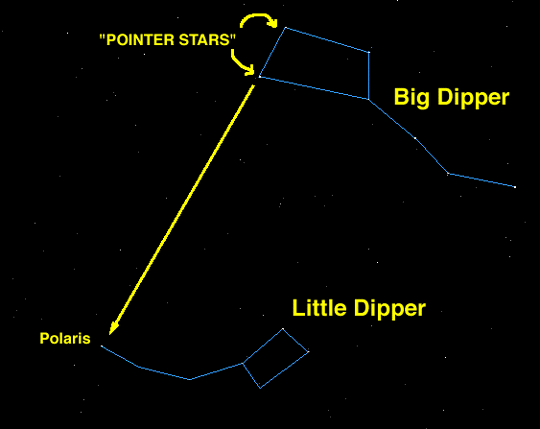Now, hang on to your bridgework. We're about to do a loopty-loop!

Comparing the last two illustrations of the Big Dipper on this page, you'll notice they each tilt the constellation differently. That's not because the artists held their computers at different angles. The reason for the tilt is the second secret the Big Dipper has for us.
NEXT – Merry-go-round of the Sky